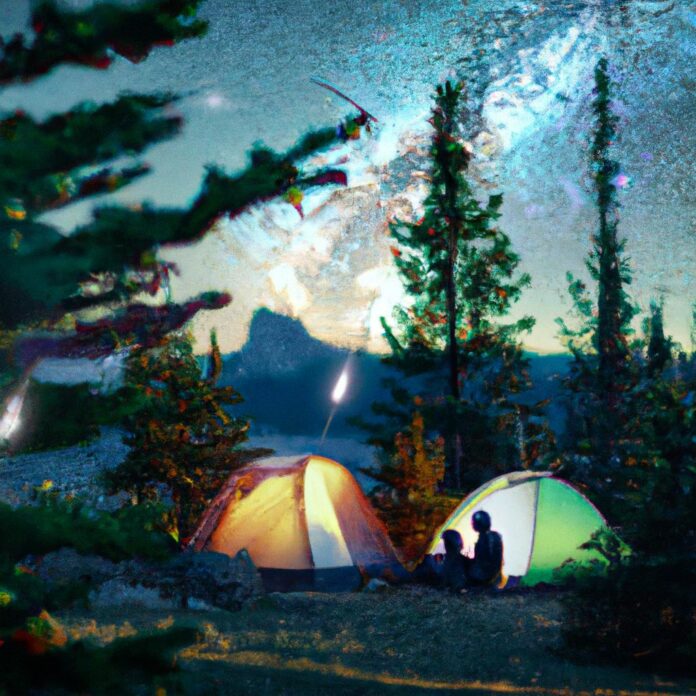Choosing the right tent for outdoor adventures is essential for a comfortable and enjoyable experience. Whether you’re hiking, camping, or embarking on a mountaineering expedition, the right tent can make all the difference. By considering various factors and understanding your specific needs, you can select the perfect tent for your outdoor activities.
Why is choosing the right tent important for outdoor adventures? The right tent provides protection from the elements, ensures a good night’s sleep, and serves as a home away from home in the wilderness. It keeps you safe and dry, shields you from bugs and insects, and offers privacy and comfort.
Different types of tents are available to cater to various outdoor activities. These include backpacking tents, camping tents, family tents, four-season tents, ultralight tents, and trekking pole tents. Each type has its own unique features and suitability for specific outdoor pursuits.
Lastly, taking care of your tent through proper maintenance and storage is crucial for its longevity and performance. Regular cleaning and drying, appropriate storage to prevent mildew, and timely repairs ensure that your tent remains in top condition.
By considering all these factors and understanding your specific needs, you can confidently choose the perfect tent for your outdoor adventures and make lasting memories in the great outdoors.
Why is choosing the right tent important for outdoor adventures?
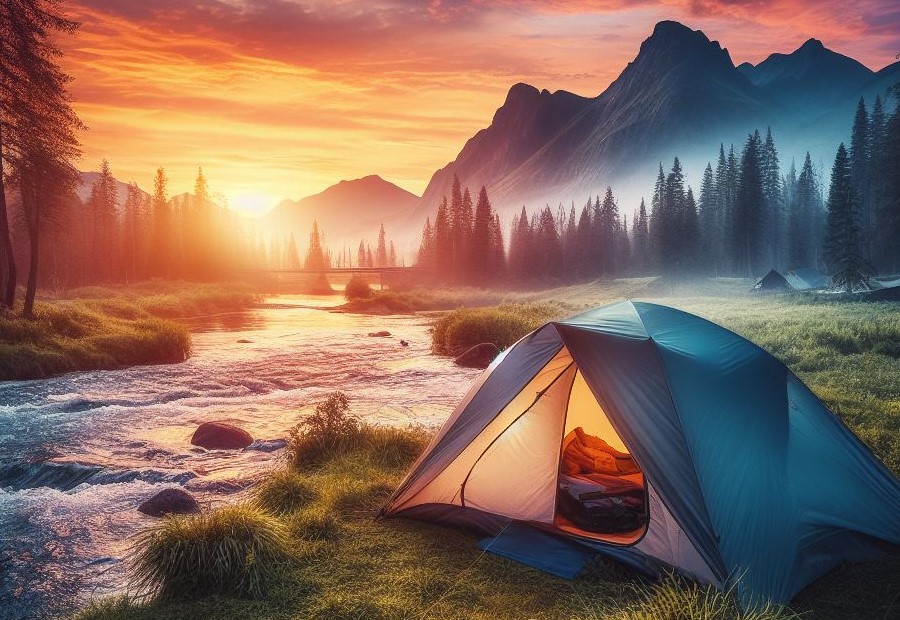
1. Protection: The right tent provides shelter from various elements, including rain, wind, and insects. It ensures you stay dry and comfortable, enhancing your overall outdoor experience. Moreover, when you choose the right tent, you can protect yourself from unexpected weather conditions, ensuring your safety during your adventure.
2. Safety: A good tent offers stability and durability, protecting you from unexpected weather conditions. It is designed to withstand high winds and provide a secure space in challenging environments. By choosing the appropriate tent for your outdoor activity, you can ensure your safety and have peace of mind while exploring nature.
3. Comfort: Sleeping in a well-designed tent ensures a good night’s sleep, which is essential for enjoying outdoor activities. The right tent provides insulation and ventilation, maintaining a comfortable temperature inside. By considering your comfort needs and selecting the right tent, you can have a relaxing and rejuvenating sleep during your outdoor adventure.
4. Adaptability: Different outdoor activities require different types of tents. For example, backpacking tents are lightweight and compact, perfect for hikers and backpackers. Family tents offer more space and comfort for camping with a group. By carefully choosing the right tent that suits your specific needs, you can ensure maximum adaptability and convenience during your outdoor adventure.
5. Peace of mind: Selecting a reliable and high-quality tent gives you peace of mind during your outdoor adventure. You can focus on enjoying nature and pursuing your activities without worrying about your shelter. By investing in a dependable tent, you can have the confidence that your shelter will protect you throughout your outdoor adventure.
Overall, choosing the right tent is of utmost importance for outdoor adventures. It provides protection, safety, comfort, adaptability, and peace of mind, ensuring a memorable and enjoyable experience in the great outdoors.
Considerations for Choosing a Tent for Outdoor Adventures
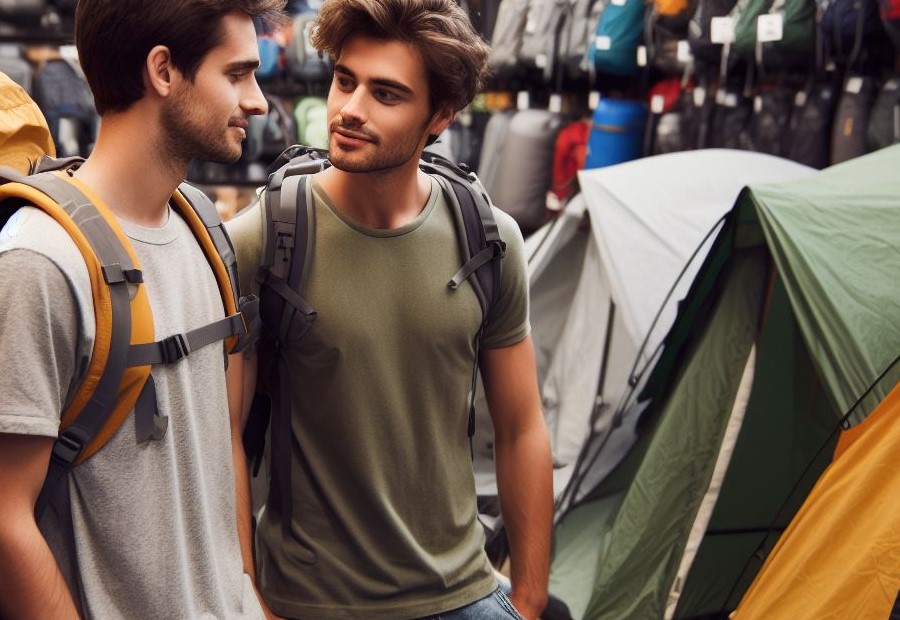
Choosing the perfect tent for your outdoor adventures can be a daunting task but fear not! We’re here to help you navigate through the key considerations that will guide you towards making the right decision.
From tent capacity to seasonality, weight, design features, durability, and price range, we’ll walk you through each aspect so you can confidently choose a tent that suits your needs.
So, let’s dive in and discover what makes a tent the perfect companion for your outdoor escapades!
Tent Capacity
When considering the tent capacity, it is important to choose a tent that can comfortably accommodate the number of people you plan to have inside. Here is a table that shows the recommended tent capacities for different group sizes:
| Group Size | Tent Capacity |
| 1-2 people | 1-2 person tent |
| 3-4 people | 3-4 person tent |
| 5-6 people | 5-6 person tent |
| 7-8 people | 7-8 person tent |
| 9+ people | Group tent or multiple tents |
It is important to consider that these recommendations indicate a tight fit, so if you prefer extra space or plan to have gear inside the tent as well, you may want to choose a tent with a higher tent capacity.
The tent capacity is also influenced by the size and layout of the sleeping pads or mattresses you plan to use. Make sure to consider the dimensions of your sleeping gear when choosing the tent capacity.
Seasonality
The seasonality of a tent is an important consideration when choosing one for outdoor adventures. It determines the suitability of the tent for different weather conditions and temperatures. Here is a breakdown of tent seasonality:
| Seasonality | Description |
| 3-Season Tents | Designed for use in spring, summer, and fall. They offer good ventilation, protection from rain, and are lightweight. Ideal for most camping and backpacking trips. |
| 4-Season Tents | Built to withstand harsh winter conditions, including heavy snowfall and strong winds. They have stronger poles, reinforced fabrics, and offer better insulation. Suitable for mountaineering, expeditions, and winter camping. |
| Ultralight Tents | Extremely lightweight and designed for backpackers who prioritize weight reduction. They are typically 3-season tents and may sacrifice durability for weight savings. |
When considering seasonality, think about the specific outdoor activities you will be engaging in and the climate of the locations you plan to visit. It’s important to choose a tent that can withstand the conditions you are likely to encounter to ensure your comfort and safety during your adventures.
Weight and Portability
When choosing a tent for your outdoor adventures, it is important to consider factors such as weight and portability.
- Weight: If you will be backpacking or going on long hikes, the weight of the tent is crucial. Look for lightweight materials and designs that prioritize weight savings while still ensuring durability.
- Compactness: Opt for a tent that can be packed down into a small and compact size for easy transport. Consider tents that come with carrying bags or compression sacks to minimize the space it takes up in your backpack or luggage.
- Setup and Takedown: Choose a tent that is quick and easy to set up and take down. Look for features like color-coded poles or intuitive designs that make the setup process hassle-free.
- Portability Features: Some tents come with additional features to enhance portability. Look for tents with detachable rainflies, removable footprint, or the ability to be pitched with trekking poles. These features can further reduce the weight and bulk of the tent.
- Trade-Offs: Keep in mind that lightweight and portable tents may sacrifice space and comfort. Consider the trade-off between weight and livability to ensure that the tent meets your specific needs and preferences.
By considering the weight and portability of a tent, you can ensure that it is suitable for your outdoor activities and easy to transport wherever your adventures may take you.
Tent Design and Features
When selecting a tent for outdoor adventures, the design and features of the tent are vital considerations. Here are some crucial aspects to look for:
- Tent Size and Layout: Take into account the tent’s capacity, including the number of people it can accommodate and the arrangement of the sleeping areas. Look for features such as separate rooms or partitions for added privacy.
- Easy Tent Setup: Ensure there is a straightforward and fast setup process, especially if you plan to pitch the tent frequently. Look for features like color-coded poles and clips for effortless assembly.
- Ventilation: Opt for tents with mesh panels and windows to enhance airflow and minimize condensation. Adequate ventilation is crucial for comfort in hot and humid weather conditions.
- Weather Resistance: Select a tent with robust and waterproof materials, reinforced seams, and a rainfly to shield you from rain and wind. Consider features such as a bathtub-style floor that prevents water seepage.
- Durability: Check for top-notch materials and construction that can withstand outdoor elements and frequent use. Look for features such as reinforced zippers, sturdy poles, and rip-stop fabrics.
- Storage and Organization: Seek out features like interior pockets, gear lofts, and hanging loops that assist in keeping your belongings organized and easily accessible inside the tent.
- Weight and Portability: Take into account the weight of the tent, particularly if you plan to carry it on backpacking trips. Look for lightweight materials and a compact packing size to facilitate transportation.
By considering these design and features, you can choose a tent that caters to your specific needs and enhances your outdoor experience.
Durability and Weather Resistance
When it comes to choosing a tent for outdoor adventures, durability and weather resistance are crucial factors to consider. These factors determine how well the tent will hold up in various conditions and ensure your comfort and safety.
- Material Quality: Look for tents made from high-quality, durable materials such as ripstop nylon or polyester. These materials are designed to withstand wear and tear, and they are also water-resistant to protect you from rain and moisture.
- Seam Construction: Pay attention to the seams of the tent. Double-stitched seams and tape-sealed seams enhance the tent’s durability and help prevent water leakage during rainy weather.
- Pole Strength: Strong and sturdy tent poles are essential for withstanding wind and other outdoor elements. Look for tents with durable aluminum or fiberglass poles that can handle the stress of changing weather conditions.
- Weather Protection Features: A rainfly is a critical feature that provides an additional layer of protection against rain and acts as a shield for your tent. Additionally, a robust tent design with good ventilation helps to prevent condensation and keep you comfortable inside.
Pro-tip: To enhance the durability and weather resistance of your tent, make sure to properly set it up, secure the stakes, and use a footprint to protect the tent floor from sharp objects and moisture.
Price Range
When considering the price range of tents for outdoor adventures, it’s important to find a balance between your budget and the features you need for your specific activities. Below is a table outlining different price ranges and the corresponding quality and features you can expect:
| Price Range | Quality and Features |
|---|---|
| Low Range | Affordable options with basic features. Suitable for occasional camping or beginners. |
| Mid Range | Offers a good balance between price and quality. Suitable for regular campers and backpackers seeking durability and comfort. |
| High End | Premium tents with advanced features and materials. Ideal for experienced adventurers or those who prioritize performance and durability. |
When considering the price range, keep in mind your specific needs and how frequently you will be using the tent. If you’re an occasional camper, a low-range tent may be sufficient. However, if you plan on frequent outdoor adventures or require added durability and performance, investing in a mid-range or high-end tent would be beneficial.
Remember, the price range often reflects the quality, durability, and additional features of the tent. Consider your budget and the specific requirements of your outdoor activities when selecting the ideal tent.
Types of Tents
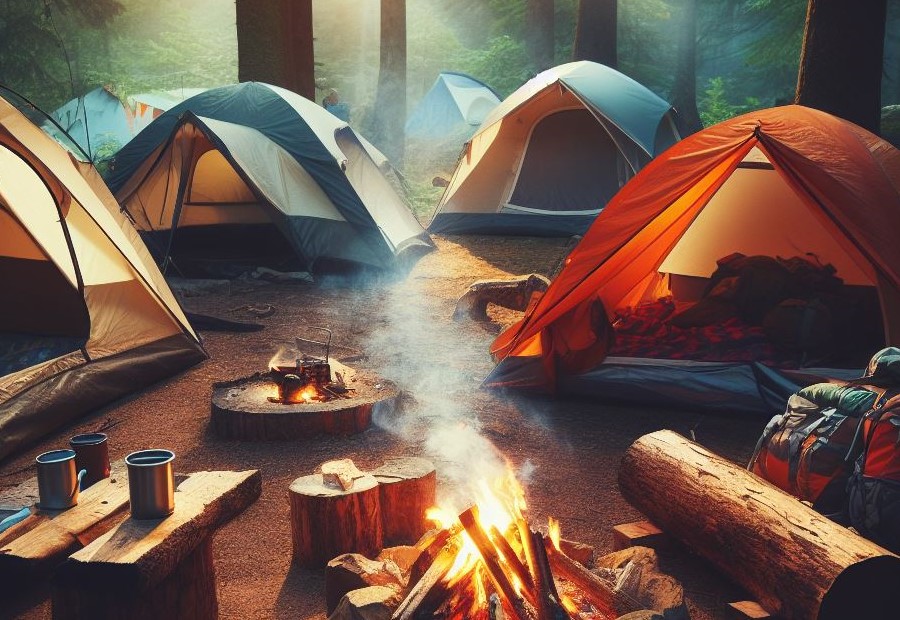
When it comes to outdoor adventures, having the right tent can make all the difference. In this section, we’ll dive into the different types of tents available, each catering to unique needs and preferences. From backpacking tents for the adventurous souls to family tents for memorable camping trips, we’ll explore the various options such as four-season tents, ultralight tents, and even trekking pole tents. So, grab your gear and let’s embark on a journey to find the perfect tent for your next outdoor escapade.
Backpacking Tents
When it comes to backpacking tents, there are a few key factors to consider:
- Weight and Portability: Backpackers need lightweight and compact tents that are easy to carry in their backpacks. Look for backpacking tents made with lightweight materials like nylon.
- Durability and Weather Resistance: Since backpackers often face varying weather conditions, it’s important to choose a backpacking tent that is durable and can withstand rain, wind, and even snow. Look for backpacking tents with waterproof coatings and strong poles.
- Tent Capacity: Consider the number of people that will be using the backpacking tent. Most backpacking tents are designed for one or two people, but there are also options available for larger groups.
- Tent Design and Features: Look for backpacking tents with features that will enhance your camping experience, such as easy setup, ample interior space, and good ventilation.
- Price Range: Set a budget for your backpacking tent and consider options within that price range. Keep in mind that investing in a quality backpacking tent is important for long-term use.
Pro-tip: Before purchasing a backpacking tent, make sure to read reviews and research different brands to find the best one that suits your needs. Test-setting up the backpacking tent before your trip to ensure you are familiar with the setup process and can do it efficiently in the field.
Camping Tents
When it comes to camping tents, there are several factors to consider:
- Tent Capacity: Determine the number of people that will be using the tent. Make sure to choose a tent that can comfortably accommodate everyone.
- Seasonality: Consider the weather conditions you will be camping in. Choose a tent that is suitable for the seasons you plan to camp in, whether it’s a three-season tent for spring, summer, and fall, or a four-season tent for winter camping.
- Weight and Portability: If you will be backpacking or hiking to your camping destination, choose a tent that is lightweight and easy to carry.
- Tent Design and Features: Look for features like easy setup, good ventilation, and sturdy construction. Consider the type of camping you will be doing to determine which design features are essential for your needs.
- Durability and Weather Resistance: Your tent should be able to withstand various weather conditions and provide adequate protection from rain, wind, and other elements.
- Price Range: Determine your budget and choose a tent that offers good value for your money.
Camping tents are essential for a comfortable and enjoyable outdoor adventure. They provide shelter and protection, allowing you to fully enjoy your time in nature.
Family Tents
When it comes to choosing a tent for your family outdoor adventures, family tents are the way to go. There are several factors to consider when selecting the perfect family tent.
- Tent size: It is important to consider the size of your family when choosing a family tent. Family tents come in a variety of sizes to accommodate different group sizes. Consider the number of family members and any additional space needed for activities or storage.
- Durability: Family tents made with high-quality materials are essential for longevity and withstanding various weather conditions. Look for features like reinforced seams and a sturdy frame to ensure durability.
- Room layout: Family tents often have separate sleeping areas or dividers to provide privacy and organization within the tent. Consider your family’s preferences and choose a tent with a layout that would work best for you.
- Ventilation: Good ventilation is crucial to keep the interior of the tent cool and prevent condensation. Look for family tents with mesh windows and vents to ensure proper airflow.
- Ease of setup: It is important to consider how easy it is to set up and take down the tent, especially if you have young children or limited camping experience. Look for family tents that are designed for easy setup.
- Additional features: Family tents often come with extra features like a rainfly, storage pockets, or a screened porch area. Consider what additional features would enhance your camping experience and look for a family tent that offers these features.
When choosing a family tent, prioritize space, durability, and convenience. Look for a family tent that can comfortably accommodate your family, withstand various weather conditions, and is easy to set up and take down. Consider the layout and additional features that would enhance your camping experience. By considering these factors, you can find the perfect family tent for your outdoor adventures.
Four-Season Tents
Four-Season Tents are specifically designed to withstand harsh weather conditions, including snow, high winds, and freezing temperatures. These tents are made using durable and weather-resistant materials, such as strong poles, reinforced seams, and waterproof fabrics.
They provide excellent insulation and ventilation, ensuring warmth in cold conditions and preventing condensation buildup. Thanks to their sturdy construction, Four-Season Tents can withstand heavy snow loads and strong winds, often featuring geodesic or dome-shaped designs. In extreme weather, these tents typically offer multiple entrances and vestibules for gear storage and easy access.
Compared to other types of tents, Four-Season Tents are heavier and bulkier, making them more suitable for base camps and longer trips where protection from harsh weather is essential.
Popular brands like North Face, MSR, Mountain Hardwear, and Hilleberg offer reliable Four-Season Tents.
Considering the unpredictable nature of outdoor adventures, having a reliable and durable Four-Season Tent is crucial for ensuring safety and comfort, especially in extreme weather conditions. When selecting a Four-Season Tent, prioritize features such as durability, weather resistance, insulation, and ample storage space.
Additionally, consider the weight and portability if you plan to carry the tent on backpacking trips. By choosing a high-quality Four-Season Tent from reputable brands, you can be confident that you have the necessary shelter to withstand any challenging outdoor environment.
Ultralight Tents
Ultralight tents are specifically designed to be lightweight, making them ideal for backpacking and long hikes. They typically weigh less than 3 pounds, allowing you to carry them easily without adding too much weight to your pack.
- Portability: These tents are compact and easy to pack, taking up minimal space in your backpack. They often come with a compression sack or stuff sack, ensuring they can fit snugly in your pack.
- Durability: Despite their lightweight construction, ultralight tents are engineered to be durable and withstand various weather conditions. They are made from high-quality materials that are tear-resistant, waterproof, and can handle strong winds.
- Space: While ultralight tents prioritize weight savings, they still offer enough space for one or two people to sleep comfortably. They may have a smaller floor area and lower height compared to other tents, but they still provide sufficient room for a good night’s sleep.
- Setup: Ultralight tents are designed for quick and easy setup, allowing you to spend less time pitching your tent and more time enjoying your outdoor adventure. They often feature intuitive pole designs and color-coded attachments to simplify the setup process.
When choosing an ultralight tent, consider the specific needs of your outdoor adventure. If you plan on backpacking in rugged terrain, prioritize durability and weather resistance. If weight is your primary concern, look for tents with the lightest materials available. Additionally, always consider the size and capacity of the tent to ensure it meets your requirements. Happy camping!
Trekking Pole Tents
When it comes to choosing the right tent for your outdoor adventures, trekking pole tents can be a great option. Here are some key factors to consider:
- Trekking pole tents are designed to be lightweight, making them ideal for backpacking or long hikes. They are made with minimalistic materials to reduce weight without compromising durability.
- Easy Setup: These tents utilize trekking poles instead of traditional tent poles, making them quick and easy to set up. This is especially useful when you’re on the move and need to set up camp quickly.
- Versatility: Trekking pole tents are versatile and can be used in various terrains and weather conditions. They are designed to withstand rain, wind, and even light snow, providing reliable protection in different environments.
- Space Efficiency: Despite their lightweight design, trekking pole tents offer a surprising amount of interior space. They are typically designed with a pyramid or A-frame shape, maximizing the useable area inside the tent.
- Cost-Effective: Compared to other types of backpacking tents, trekking pole tents are often more affordable. They provide a cost-effective option for outdoor enthusiasts who want a reliable shelter without breaking the bank.
When considering your next outdoor adventure, don’t forget to explore the benefits of trekking pole tents. They offer a lightweight, easy-to-use, versatile, and cost-effective solution for your camping needs.
Factors to Consider for Different Outdoor Activities
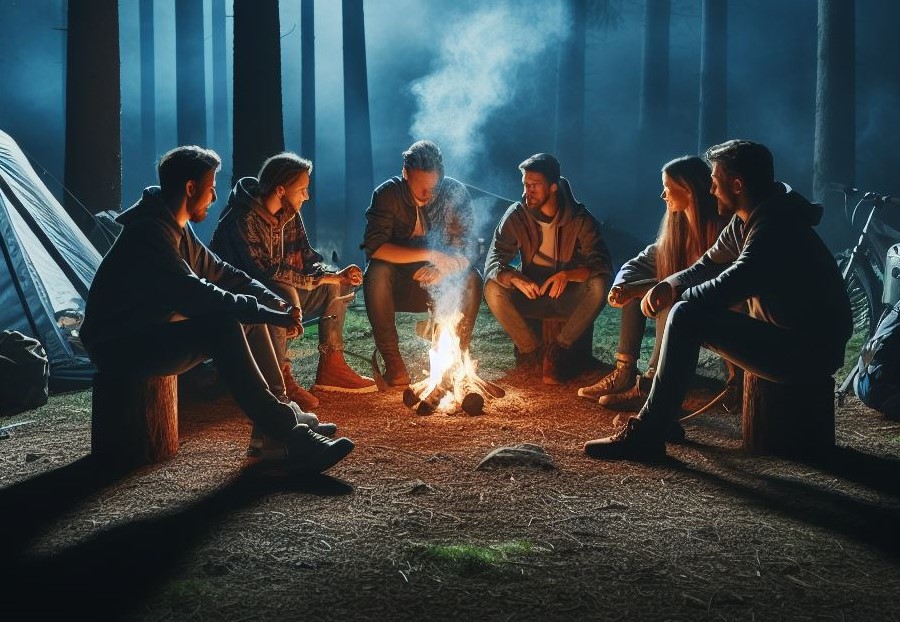
When venturing into the great outdoors, choosing the right tent can make or break your adventure. In this section, we’ll explore the factors to consider for different outdoor activities.
From the rugged trails of hiking and backpacking to the serene beaches and deserts, we’ll cover it all. So whether you’re planning a camping trip, mountaineering expedition, or even a cycling adventure, this guide will help you find the perfect shelter for your outdoor escapades. Let’s dive in and discover the key considerations for a memorable and comfortable outdoor experience.
Hiking and Backpacking
When it comes to choosing a tent for hiking and backpacking, there are several important factors to consider:
- Hiking and Backpacking Tent Capacity: Consider the number of people who will be using the tent. If you are hiking or backpacking alone, a single-person tent would be sufficient.
- Hiking and Backpacking Weight and Portability: Since you will be carrying the tent on your back, it is essential to choose a lightweight and compact option. Look for tents made from lightweight materials.
- Hiking and Backpacking Durability and Weather Resistance: Hiking and backpacking often involve unpredictable weather conditions. Choose a tent that is durable and can withstand wind, rain, and even snow.
- Hiking and Backpacking Tent Design and Features: Look for tents with a freestanding design, as they are easier to set up and offer more versatility in choosing a camping spot. Features like a waterproof rainfly and a vestibule for storing gear are also beneficial.
- Hiking and Backpacking Seasonality: Consider the seasons and climates in which you will be hiking and backpacking. There are three-season and four-season tents available, each suitable for different weather conditions.
By considering these factors, you can select a tent that is specifically tailored to meet the needs of hiking and backpacking, ensuring a comfortable and enjoyable outdoor adventure.
Camping
When it comes to camping, choosing the right tent is crucial for a successful outdoor adventure. Here are some considerations to keep in mind:
- Tent Capacity: Determine how many people will be using the tent to ensure everyone has enough space to sleep comfortably.
- Seasonality: Consider the weather conditions you will be camping in. Choose a tent that is suitable for the specific season, whether it’s a three-season tent for mild weather or a four-season tent for extreme conditions.
- Weight and Portability: If you plan on backpacking or hiking to your camping spot, opt for a lightweight and portable tent that is easy to carry.
- Tent Design and Features: Look for tents with features that cater to your needs, such as multiple doors for easy access, vestibules for additional storage, and ventilation options for airflow.
- Durability and Weather Resistance: Ensure that the tent is made with high-quality materials that can withstand various weather conditions, including rain, wind, and UV rays.
- Price Range: Consider your budget and find a tent that offers the best value for your money.
When camping, it’s also important to bring essential camping gear such as sleeping bags, camping stoves, and camping chairs to enhance your camping experience. Don’t forget to check local regulations and guidelines for camping in the area you plan to visit. Happy camping!
Mountaineering and Expeditions
When it comes to mountaineering and expeditions, choosing the right tent is crucial for safety and comfort. Here are some factors to consider:
- Tent Capacity: Opt for a tent with a larger capacity to accommodate all your gear and provide extra space for movement.
- Seasonality: Look for a four-season tent that can withstand harsh weather conditions, including high winds, heavy snowfall, and extreme temperatures.
- Weight and Portability: Prioritize lightweight tents that can be easily carried during hikes and expeditions.
- Tent Design and Features: Consider features like multiple doors and vestibules for easy access and storage, as well as a strong and sturdy frame for stability.
- Durability and Weather Resistance: Choose a tent made from durable materials that can withstand wear and tear and offer excellent waterproofing.
Pro-tip: When mountaineering or going on expeditions, prioritize safety and durability over cost. Invest in a high-quality tent that can withstand the challenging conditions of these activities.
Cycling and Motorcycle Camping
Tent Size: When choosing a tent for cycling and motorcycle camping, consider its size. Look for a tent that can comfortably accommodate both you and your gear. A tent with a capacity of at least two people is recommended.
Weight and Portability: Opt for a lightweight tent that is easy to carry on your bike or motorcycle. Look for tents made from lightweight materials such as nylon or polyester. Consider the packed size of the tent as well, ensuring it fits easily into your travel setup.
Weather Resistance: Since you’ll be camping in various conditions, choose a tent that offers good weather resistance. Look for features such as a waterproof rainfly, a durable and waterproof floor, and strong poles to withstand windy conditions.
Setup and Packability: Consider how easy it is to set up and pack away your tent. Look for tents with a simple and quick setup process, and ones that come with a carrying bag or stuff sack for easy transportation.
Durability: Select a tent that is built to withstand the rigors of cycling or motorcycle camping. Look for tents with reinforced seams, sturdy zippers, and durable fabrics that can withstand wear and tear.
Ventilation: Camping in warm weather can get uncomfortable without proper ventilation. Choose a tent that has ample mesh panels or windows for airflow to keep you cool and comfortable during your camping trip.
Price Range: Consider your budget when selecting a tent. Determine how much you are willing to spend and look for options within that price range. Keep in mind that investing in a high-quality tent can provide long-term durability and value.
Beach and Desert Camping
When it comes to beach and desert camping, there are certain considerations you should keep in mind to ensure a comfortable and enjoyable experience. Here are the key factors to consider:
- Wind resistance: Since beaches and deserts are often exposed to strong winds, it’s important to choose a tent with good wind resistance. Look for tents with sturdy frames and guy lines to secure it properly.
- Ventilation: Beaches and deserts can get extremely hot during the day. Opt for a tent with ample ventilation, such as mesh panels or large windows, to allow for airflow and keep the interior cool.
- Sand-proof design: Sand can easily get inside your tent, so look for tents with features like a bathtub floor design or built-in groundsheet to prevent sand from entering. Additionally, consider using a tarp or footprint underneath the tent for extra protection.
- Sun protection: The sun can be intense in beach and desert environments. Choose a tent with a rainfly that provides UV protection, or opt for a tent made of materials with UV-resistance properties.
- Portability and ease of setup: Beach and desert camping often involve carrying your gear over sand or rough terrain. Look for lightweight and compact tents that are easy to transport, and choose a tent with a quick and simple setup process.
Fun Fact: Did you know that deserts cover about one-third of the Earth’s land surface and are home to a variety of unique plants and animals adapted to survive in extreme conditions?
Tent Care and Maintenance
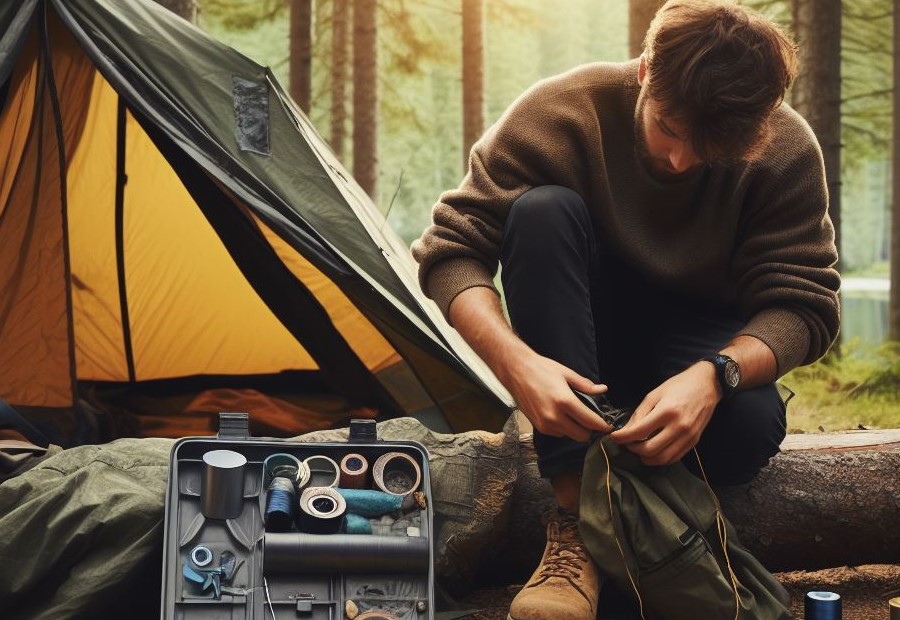
Properly caring for and maintaining your tent is crucial to ensure a successful outdoor adventure. In this section, we’ll explore the ins and outs of tent care and maintenance, covering everything from cleaning and drying to storage and repairs. Discover the secrets to extending the lifespan of your tent and maximizing its performance in any weather condition. So, buckle up and get ready to learn the essential tips and tricks for keeping your tent in top-notch shape.
Cleaning and Drying
Cleaning and drying your tent after each use is essential for maintaining its longevity and performance. Here are the steps to effectively clean and dry your tent:
1. Shake off any loose dirt or debris from the tent.
2. Use a soft brush or sponge to gently scrub away stains or stubborn dirt.
3. Prepare a mixture of mild soap or tent-specific cleaner with water.
4. Dip the sponge or cloth into the soapy water and spot clean any areas that require extra attention.
5. Rinse the tent thoroughly with clean water to remove all soap residue.
6. Gently squeeze out any excess water from the tent fabric.
7. Hang the tent in a well-ventilated area or outdoors to air dry. Avoid direct sunlight as it can damage the fabric.
8. Ensure the tent is completely dry before storing it to prevent the growth of mold or mildew.
9. Once dry, fold the tent loosely to prevent creasing and store it in a dry and cool place.
Regular cleaning and proper drying of your tent will help to maintain its waterproofing capabilities and prevent any unpleasant odors. It is important to note that using a washing machine or dryer is not recommended, as it can damage the fabric or weaken the tent’s seams. By following these steps, you can ensure that your tent remains clean and ready for your next outdoor adventure.
Storage
When it comes to storage, there are certain factors to consider to ensure the longevity of your tent and its accessories.
- Clean and Dry: Before storing your tent, make sure it is thoroughly cleaned and dried. This helps prevent the growth of mold and mildew.
- Proper Folding: Storage your tent properly is crucial for efficient storage. Follow the manufacturer’s instructions to avoid unnecessary strain or damage to the fabric.
- Separate Components: If possible, store the tent poles, stakes, and rainfly separately. This prevents any sharp edges or metal parts from rubbing against the tent fabric, leading to tears or punctures.
- Avoid Extreme Temperatures: When storing your tent, choose a location that is not exposed to extreme heat or cold. Extreme temperatures can weaken the fabric and other materials over time.
- Use a Stuff Sack: Invest in a quality stuff sack or storage bag specifically designed for tents. This helps protect your tent from dust, dirt, and potential damage.
Remember, proper storage plays a vital role in maintaining the durability and functionality of your tent, ensuring it is ready for your next outdoor adventure.
Repairs
When it comes to repairs for your tent during your outdoor adventures, it’s important to be prepared. Here are some key points to consider:
- Inspect your tent before each trip to identify any potential repairs that might be needed.
- Carry a tent repair kit that includes items like spare tent poles, fabric patches, seam sealer, and duct tape.
- If you notice a small tear or hole in the tent fabric, use a fabric patch and a suitable adhesive to repair it. This will prevent further damage and keep your tent watertight.
- If a tent pole breaks or gets damaged, use a spare pole from your repair kit or use a splint to temporarily fix it until you can get a replacement.
- Check and tighten the tent’s guy lines and stakes regularly to ensure the tent remains stable and secure.
- After each trip, clean and dry your tent thoroughly before storing it to prevent mold and mildew growth.
By being proactive and addressing any necessary repairs promptly, you can ensure that your tent remains in good condition and ready for your next outdoor adventure.
Frequently Asked Questions
What factors should I consider when choosing a tent for my outdoor adventure?
When choosing a tent for your outdoor adventure, there are several factors to consider. These include the camping environment, group size, seasonality, portability, and budget. It’s important to think about these factors to ensure you select the right tent for your needs.
What types of tents are suitable for different camping environments?
There are various tent types available for different camping environments. For example, a dome tent is versatile and suitable for most camping situations. If you’re camping in colder climates, a softshell rooftop tent can provide a flat surface and easy access to the snow. Cabin tents are great for families or camping in desert areas.
How should I consider my budget when selecting a tent?
When it comes to budget considerations, it’s important to determine your financial range. Tent prices can vary based on size, materials, brand, and features. Understanding your budget range will help you find a tent that meets your needs without breaking the bank.
What are some important tent features to consider?
When selecting a tent, there are several features to consider. These include enhanced waterproofing, a room divider for added privacy, ventilation options for fresh air circulation, and a carbon monoxide detector for safety. Additionally, tent vestibules and storage can provide space for gear organization.
What type of tent is suitable for windy areas or taller individuals?
If you’re camping in windy areas or are taller than average, a teepee tent would be a suitable option. Teepee tents offer more headroom and floor space, making them ideal shelters in windy conditions. They often come with screens, windows, and carbon monoxide detectors for added comfort and safety.
Why should I consider renting or borrowing a tent before purchasing one?
Renting or borrowing a tent initially can be beneficial for newcomers to camping. It allows you to try out different tent models and sizes to find the right fit for your needs. This helps avoid unnecessary expenses and ensures you make an informed decision when investing in a tent for your outdoor adventures.

